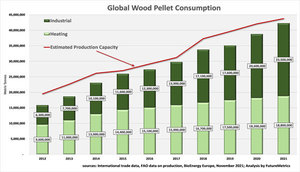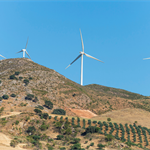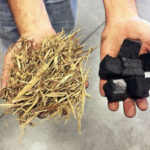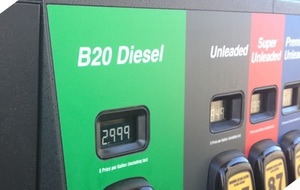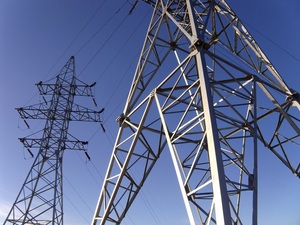A Rational, Pragmatic Off-Ramp to Decarbonization
Energy Disrupter
Using sustainably sourced wood pellet fuel in place of coal is an essential part of the low-carbon energy transition.
- <img src="http://biomassmagazine.com/uploads/posts/magazine/2021/11/resize/Cont3-FutureMetrics1_16373340402022-300×300-noup.jpg" title="Figure 1
</small>”> - <img src="http://biomassmagazine.com/uploads/posts/magazine/2021/11/resize/Cont3-FutureMetrics2_16373340402308-300×300-noup.jpg" title="Figure 2
</small>”>
ADVERTISEMENT
Wood pellet fuel produced from perpetually renewing sources is, and will be in the future, an essential component in the transition to a decarbonized future. This article primarily focuses on the power generation sector, but the role of pellet fuel in the heating markets should not be ignored. As Figure 1 shows, the heating pellet markets were larger than the industrial pellet markets until 2018.
The use of pellet fuel for heating will continue to grow in many jurisdictions as coal, heating oil and eventually natural gas become disallowed carbon-emitting energy sources. But the wood pellet industry has sustainability boundaries that cannot be crossed. If it is to be recognized as a renewable energy source, it has to renew.
Decarbonizing the Power Sector
A pragmatic policy for lowering the CO2 intensity of the power generation sector with a transition to renewable energy must be tempered with the need to maintain reliability and stability in the delivery of electricity.
Moving to increased renewable generation is more complicated than simply building lots of wind turbines and solar farms. But that is often the offered solution, with a reference to solving the intermittency and variability of wind and solar with battery or hydrogen storage. The future for power generation relying heavily on electricity generated from wind turbines and solar farms is a worthy goal that should define the destination. But deploying more wind turbines and solar farms will require massive energy storage at a scale that is orders of magnitude from where we are today.
Grid-level energy storage sufficient to support the reliable supply of electricity in a decarbonized power sector without on-demand, so-called thermal generation is at least decades away. The transition to that goal will take a long time and require continued improvements in storage technology and density, and massive investments in capacity.
A cornerstone strategy for maintaining grid reliability and on-demand, load-following, frequency-stabilizing generation during this long transition from where we are today to a generation portfolio that may not be dependent on the combustion of fuel is to do what is already being done in many nations. And that is using sustainably produced wood pellet fuel produced from renewing working forests to replace coal in utility power boilers.
Figure 2 shows a recent week’s generation mix in the United Kingdom. Note that the power produced in four 650-MW units at the Drax power station and the 420-MW Lynemouth station, which were converted to use 100% pellet fuel, satisfied nearly 9% of the total U.K. demand. Where the arrow is pointing, solar was not generating (nighttime) and there was very little wind. During that period, the Drax and Lynemouth stations produced nearly 14% of all the electricity used in the U.K., with carbon emissions nearly 90% lower than what would have been produced from coal.
Using solid pellet fuel made from sustainable sources of woody biomass is not a novel idea. In 2021, about 23 million metric tons of industrial pellet fuel will be used as a highly carbon-beneficial substitute for coal in power generation.
The strategy is proven as effective and economical in several nations. It is deployable now in existing coal-fueled power stations. There is no need to invest in new generation infrastructure, new interconnection infrastructure, or wait for continued improvements in energy storage capacity, efficiency and density.
To be carbon beneficial, sustainability must be the foundation of the industrial pellet fuel sector. When it comes to management of the sources of woody biomass, there are sustainability boundaries that cannot be crossed. The foundational and absolutely necessary condition is that the net stock of carbon held in the forest landscape cannot be depleted by the harvesting rate exceeding the growth rate, by deforestation or improper land use change.
“Working forests” is a term for those that are managed and grown to produce the raw materials for many industries. The primary industries are lumber and other building materials, furniture, flooring, paper, packaging and tissue. The production of these commodities and the management of the working forests for optimal productivity produces byproducts that are used in pellet manufacturing.
Proving that the feedstock sources are sustainable, and thus, that the net carbon stocks in the forests are not being depleted, is the foundation of policy and rules in nations that use pellet fuel in place of coal for power generation, and is a simple but necessary condition.
The Role of Policy
Policy can protect the forest resources and their carbon stocks, supporting the energy transition to a decarbonized future. Strategies dependent on a constant supply of pellet fuel cannot be allowed to result in the depletion of forests. But neither can misinformation be allowed to bias policymaking.
The harvest of a single mature or high-graded stand within a large, managed forest may allow for an emotionally compelling and narrowly focused photo implying that the forest is being wantonly destroyed. But that viewpoint is not supported by basic business sense. And it is not supported by the well-established and well-respected rigorous independent auditing that is necessary if the industrial wood pellet producers want to sell their 23 million metric tons of pellet fuel in 2021 into their markets. And it is also not supported by data showing that managed working forests have increasing stocks of sequestered carbon.
If the goal of policy is to transition to a future in which CO2 emissions are eliminated, then a key near- and medium-term component in that strategic, offramp plan should be to support the replacement of coal with highly carbon-beneficial pellet fuel.
The strategy is elevated by carbon capture and storage combined with bioenergy (BECCS) from pellet fuel, which opens a pathway to significant negative CO2 emissions while simultaneously generating the baseload or load-following power needed to compensate for the intermittency and variability of wind and solar power. BECCS also gives long and valuable life to coal power stations if they are converted to use pellet fuel, and subtracts CO2 from the atmosphere. The only pathway to negative carbon emissions while producing electricity at utility scale is by replacing coal with pellet fuel and deploying BECCS.
A rational, pragmatic and environmentally responsible strategy should ensure that the final regulations are supportive of the essential role that sustainably produced industrial wood pellets play on the off-ramp to a decarbonized future.
Author: William Strauss
President, FutureMetrics
Williamstrauss@futuremetrics.com
www.futuremetrics.com

